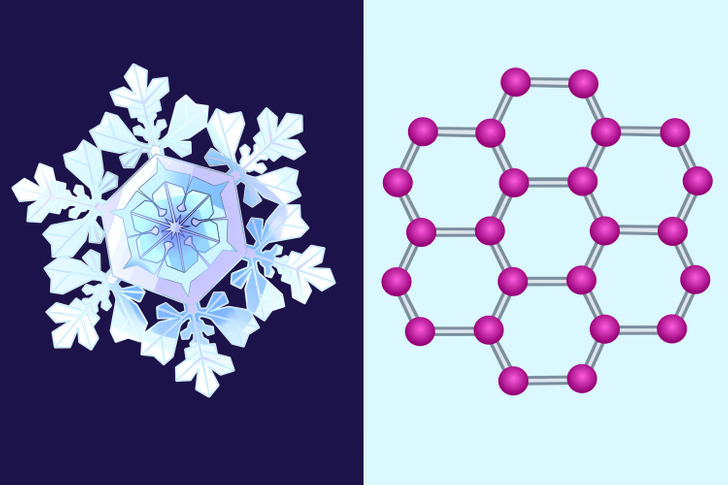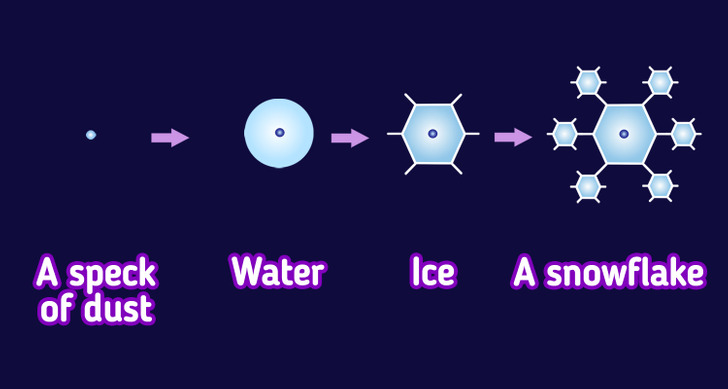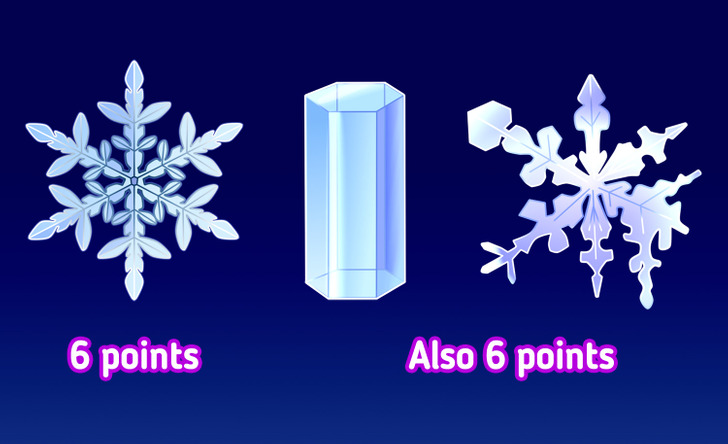Why a Snowflake Has 6 Points
Many of you have probably seen what a snowflake looks like. It’s quite an interesting sight, right? But have you ever wondered why each snowflake has 6 points?
5-Minute Crafts would like to tell you about how snowflakes are formed and why they always have 6 sides.
How snowflakes are formed

Snowflakes form in the sky where water droplets freeze into tiny ice crystals. As they fall to the ground, water vapor freezes onto the primary crystals, building new crystals — the 6 arms of the snowflake.
For the droplets to freeze, the temperature in the cloud must be below −30°F. If it’s higher, then, oddly enough, water alone won’t be enough to form a snowflake. Even if the air temperatures is below 32°F, the droplets will remain liquid unless a solid object appears, a nucleus like a dust or pollen particle, around which the snowflake crystallizes.
As for the arms of a snowflake, their appearance is a matter of probability. As the hexagon grows larger, the vertices become the most convenient place for the accumulation of water molecules. This encourages elongation of these vertices into arms, which symmetrically branch out from the center, forming a snowflake.
Why a snowflake has 6 points

But why does each snowflake have 6 points? To answer this question, we need to examine crystals at the molecular level.
The fact is that the water molecules that form a snowflake consist of 2 hydrogen atoms and 1 oxygen atom. Thus, they are shaped like the head of Mickey Mouse. When molecules are next to each other, they bond: the negative charge of oxygen attracts the positive charge of hydrogen. The result is a hexagon. When combined, they grow and this is how a snowflake appears.
Why all snowflakes are different

Snowflakes attract us with their intricate form and endless number of variations, which leads to the assumption that each crystal is unique. While this is impossible to test, as a general rule it’s entirely true.
Possible variations in temperature and humidity during the fall of a snowflake to the ground are countless, while these factors determine the form of the crystal. It may start growing in a certain way, but a momentary change in temperature or humidity will cause its form to develop in a different direction. Hexagonal symmetry is maintained, but the crystal can have all sorts of forms. For example, there are snowflakes in the form of prisms, which are usually so tiny that they are almost impossible to see with the naked eye. And the most common snow crystals are irregular crystals. These snowflakes are small and show little symmetry.